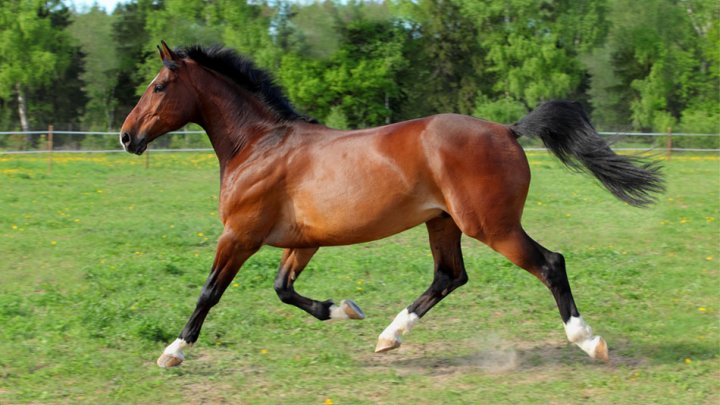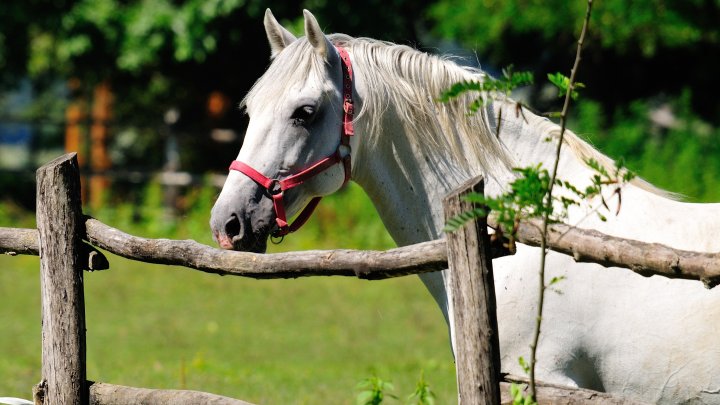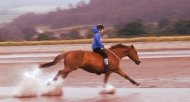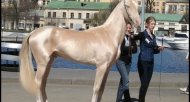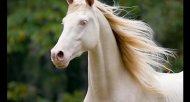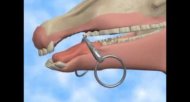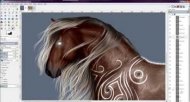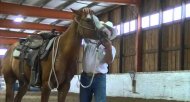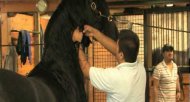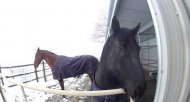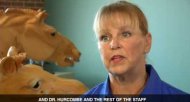Ohio State University's College of Veterinary Medicine offers the latest technology and medicine for equine care through the Galbreath Equine Center. The comprehensive services and quality of care make this a premier center for treating injured horses. The staff consists of prominent veterinary names, as well as highly trained students from the Ohio State University veterinary program.
Because the equine industry in Ohio is valued in the billions, the demand for equine services remains high. The center hosts 1200 injured horses each year, and services that many on an outpatient basis as well. The range of treatments available, along with the center's cutting-edge technology, have made this a premier locale for horses needing care, as well as for visiting veterinarians.
The Center offers the following equine care services:
• Emergency
• Critical Care
• Neurology
• Imaging
• Surgery
• Anesthesia
• Intensive Medical Procedures
• Reproduction
• Ophthalmology
• MRIs with A 3-Tesla
The center has used nuclear medicine, ultrasound, and computed tomography to make itself a first-rate equine imaging location. In addition to imaging, the staff includes experts in orthopedics, sports medicine for horses, surgery, neurology, pediatric medicine and geriatric medicine. In short, there is no aspect of veterinary care that is not handled at the center.
Perhaps one of the Galbreath Center's most important assets is Dr. Margaret Mudge. AFter attending Princeton and the University of Pennsylvania, she completed an internship at Rood & Riddle Equine Hospital and surgical residency at the University of California, Davis. Dr. Mudge provides emergency and critical care and equine surgeryand is known worldwide for her lectures. For example, she presented a review of the use of intravenous lidocaine at the 2007 American Association of Equine Practitioners Convention. Among her publication credits are The Horse magazine and Equus.
Along with her colleague Alison Gardner, DVM, MS, Dipl. ACVS-LA, Dr. Mudge reviewed 10 years of medical records to identify risk factors for colic surgery. This is an example of the dedication to her practice that has helped make the Galbreath Center an outstanding equine facility. The surgery service, of which Dr. Mudge is a part, assigns a full team to each patient. This includes an experienced and board-certified veterinarian, veterinary technicians, a resident, and advanced veterinary students. Specialists such as anesthesiologists, internists and radiologist may also be assigned to the team. These specialists are usually called in for difficult or unusual cases.
The service does not require referrals, and provides same-day treatments, except in cases requiring hospitalization or intensive care. Facilities include both stalls and examination rooms. Outpatient calls are also available, and in fact, make up half of the patients the center sees. The center also accepts horses through transport servicesand will release a horse to a transport service.
The Galbreath Center offers a full range of services along with surgery. The full list of services includes:
• Emergency and Critical Care
• Equine Surgery
• Internal Medicine
• Ophthalmology
• Performance Evaluation
• Theriogenology and Reproductive Medicine Service
• Oncology
• Equine Radiation Oncology
• Surgery
• Orthopedic Surgery
• Soft Tissue Surgery
• Clinical Support Services
• Diagnostic Imaging-Radiology
• Pharmacy
Some notable cases include a paint horse named Northstar that had been covered in an accelerant and set on fire. Northstar had been burned on 40% of his body. The center managed to save the horse and applied skin grafts to the burned area. Another horse named Pride began bleeding from his nose and was taken to the center. Veterinarians were able to get to acurately diagnose Pride and restore the horse's health.
The center serves its surrounding region, but also handles cases where horses are brought in from other locales. Treatment includes horses, donkeys, and ponies. Appointments are not necessary, but they are available. The extensive outpatient program occupies a lot of the center's time. One outpatient visit usually takes a full day. Hospital stays can be short or long-term. In the case of Northstar, he had to stay at the center for four weeks before doctors could begin applying the skin grafts.
The Bottom Line
The Ohio State University Galbreath Equine Center has become a world-renowned hospital and treatment center for equines. It is considered among the best, and the veterinary school attached to it continues to provide top-notch veterinary talent.
The center serves as a model for other equine operations and is in many ways the gold standard in the industry. The testament to the center's effectiveness may not be the high-profile cases it has handled, but the thousands of cases you never heard of because the doctors were able to restore health quickly and effectively.


